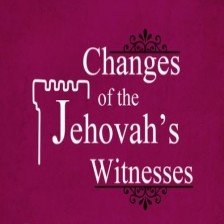At what time of year did the courses begin to count, or when did the first course start? Seemingly it was immediately after, or on the final (eighth) or “great day of the feast” of tabernacles (”festival of booths,” NW), which celebration closed the festive year. Jehovah commanded: “At the end of every seven years, in the appointed time of the year of the release, in the festival of booths, . . . you will read this law.” (Deut. 31:10, 11, NW) Incidentally, the festival of booths is the last of the three great feasts to find fulfillment in antitype; and “this feast closed the original festive calendar; . . . What the seventh day, or Sabbath, was in reference to the week, the seventh month seems to have been in reference to the year. It closed not only the sacred cycle, but also the agricultural or working year. It also marked the change of seasons, the approach of rain and of the winter equinox [properly, winter solstice, or autumnal equinox], and determined alike the commencement and the close of a sabbatical year.” (Edersheim, The Temple, pp. 234, 235; also see pp. 179, 265.)
The Watchtower Announcing Jehovah’s Kingdom. June 15, 1954 p. 383
However, back there on the day of Pentecost, 33 C.E., it became true of the imperfect members of the Christian congregation that “the blood of Jesus his Son cleanses us from all sin.”—1 John 1:7; see page 229, paragraph 1, through page 231 of the book The Temple, by Alfred Edersheim, edition of 1881
The Watchtower Announcing Jehovah’s Kingdom. October 1, 1975 p. 602
The Bible verses surrounding John 6:54 show that Jesus was speaking those words, not just to mere Jews as such, but also to many of his Israelite disciples, including his 12 apostles. Their Passover of the year 32 C.E., “the festival of the Jews,” was near. (John 6:4) In preparation for that feast, the Jews would slaughter the Passover lamb at the temple in Jerusalem and the priests would catch the blood in bowls and dash it toward the base of the altar. (See M’Clintock and Strong’s Cyclopædia, Volume 7, under “Passover,” p. 738, column 1, paragraph 4, lines 1-34; also, The Temple—Its Ministry and Services As They Were at the Time of Jesus Christ, by Alfred Edersheim, 1874 C.E., pp. 190, 191.)
The Watchtower Announcing Jehovah’s Kingdom. September 1, 1978 p. 24
Alfred Edersheim, in The Temple (1874, p. 138), presents the traditional Jewish account of this “hour”: “Slowly the incensing priest and his assistants ascended the steps to the Holy Place . . . Next, one of the assistants reverently spread the coals on the golden altar; the other arranged the incense; and then the chief officiating priest was left alone within the Holy Place, to await the signal of the president before burning the incense. . . . As the president gave the word of command, which marked that ‘the time of incense had come,’ ‘the whole multitude of the people without’ withdrew from the inner court, and fell down before the Lord, spreading their hands in silent prayer. It is this most solemn period, when throughout the vast Temple buildings deep silence rested on the worshipping multitude, while within the sanctuary itself the priest laid the incense on the golden altar, and the cloud of ‘odours’ rose up before the Lord.”
Insight On the Scriptures-Volume I. 1988. p. 1153-1154
Alfred Edersheim comments: “Before the morning sacrifice all burnt- and peace-offerings which the people proposed to bring at the feast had to be examined by the officiating priesthood. Great as their number was, it must have been a busy time, till the announcement that the morning glow extended to Hebron put an end to all such preparations, by giving the signal for the regular morning sacrifice.”—The Temple, 1874, p. 228.
Insight On the Scriptures-Volume II. 1988. p. 598-599
Priestly duties were not curtailed on the Sabbath (Mt 12:5), and infants were even circumcised on the Sabbath if that happened to be their eighth day of life. In later times the Jews had a saying, “There is no sabbath in the sanctuary,” meaning that the priestly duties went right on.—Joh 7:22; Le 12:2, 3; The Temple, by A. Edersheim, 1874, p. 152.
Insight On the Scriptures-Volume II. 1988. p. 831
